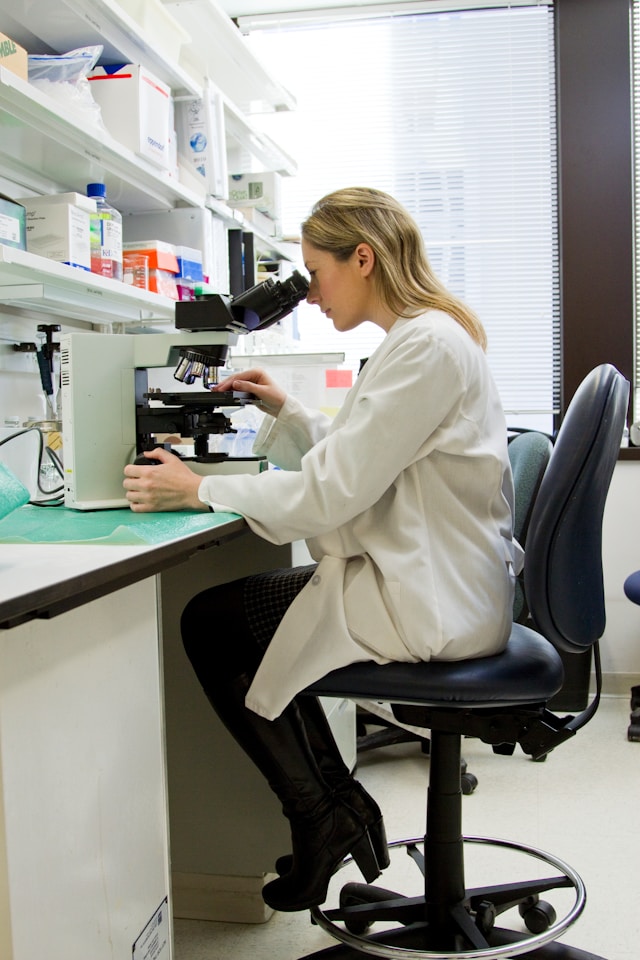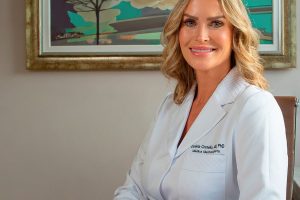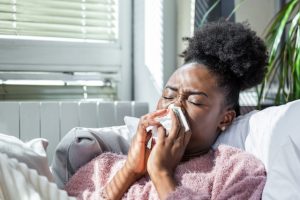
The global pandemic served as a stark reminder of the importance of hygiene and disease prevention. Consequently, a surge of everyday anti-pathogen solutions flooded the market, promising to combat the spread of viruses and bacteria. Offerings vary, and some solutions, such as anti-pathogen coatings, may indeed look promising. Beautiful as the marketing claims sound, however, these coatings still raise a question: can they really provide long-term protection without harming health and the environment?
There is, perhaps, one important thing that we have surely learned during the COVID-19 pandemic: hygiene is one of the best ways to curb the spread of infections. However, it is not always possible to achieve full and absolute cleanness. We cannot simply keep wiping down door handles or tables in common areas all day long, and it’s not possible to ensure that all items that change hands frequently, such as food packs in the supermarket, delivery packages, coins or banknotes, are constantly sanitized.
Meanwhile, new kinds of infections, like the recent COVID FLiRT Variant, stay wide awake. Marketers are on their watch as well, and continue to offer customers various pathogen-killing solutions, anti-pathogen surface coatings and additions included. Supposedly, they can help solve that problem when daily routines get in the way of maintaining complete hygiene. For most products, unfortunately, this expression remains more marketing claim than a fix that actually works, but some do live up to their promises.
Are they safe?
The range and technologies of antipathogen solutions for surfaces vary: some are applied as a varnish, some exist in the form of manufacturing additives, and some are hybrid, meaning they can be used both ways. At that, not all these products are created equal. Marketing fever has taken over the world of disinfection, and everyone is happy to ride its wave, even though not all products are actually safe or work well enough. Here’s, for example, triclosan, one of the most popular disinfectants. It is still widely used in a range of products intended for home use, such as chopping boards, children’s toys, carpets and, of course, antipathogen surfaces, but its actual efficacy and safety are highly questionable. Long exposure to triclosan leads to genetic mutations in bacteria, as a result of which they may develop resistance to certain antibiotics – in other words, triclosan may contribute to the creation of a new strain of ‘superbugs’. Besides, its user-friendliness is not quite confirmed yet as the American FDA does not recommend it for long-term daily use. This, however, does not prevent manufacturers from using triclosan, and some of them still manage to use the mandatory triclosan content label for advertising purposes, marking their products as “antibacterial”.
At that, science forges ahead, and the field of anti-pathogen coatings is actively developing, with several innovative technologies emerging. One promising area involves nanocoatings, ultra-thin layers engineered at the nanoscale. These coatings can be designed with specific properties, including the ability to kill or inactivate pathogens upon contact. Another approach envisages surface-bound antimicrobial polymers (SAMPs), microscopic polymers that can be bonded to surfaces and programmed to kill a broad spectrum of bacteria and viruses, claiming long-lasting defense. Unfortunately, these innovations and their likes are still being tested, and their effectiveness and impact on human health and the environment have not been proven – which makes their widespread application currently questionable.
But, since we are still vulnerable to pathogens, we need a solution now. And it is for this reason that responsible manufacturers prefer to resort to time-tested means, like metals that have long proven themselves in the fight against germs. Silver, for example, displays low toxicity but significant and well-documented biocidal effect at low concentrations in everyday objects, and its ability to provide antipathogen protection has been confirmed scientifically. Both the Environmental Protection Agency and the World Health Organization (WHO) consider silver safe, which makes antipathogen technologies with this agent perfect for use in daily objects, such as synthetic fabrics, consumer products, and even in hand-to-hand items like banknotes – as shows Bioguard, a technological solution by French company Oberthur Fiduciaire. The silver-based technology, developed well before the pandemic, provides a comprehensive antipathogen protection with a broad spectrum of application, and laboratory testing confirms its strong potency against the coronaviruses family. Bioguard uses a silver-based component, a combination that enables significant antipathogen activity, and can be added right on the top of a surface, or into the material during the manufacturing process. Once applied, it reduces the survival rate on objects, but causes no health or safety issues, which makes the solution safe and suitable for daily use in public objects with high pathogen-exposure rate.
Can they last long enough?
Permanence is another important question to consider when you set to choose an antipathogen coating. Testing various exposure parameters (like sun or heat exposure, mechanical stress and others) is a time-consuming task. And even when it’s done, it is not possible to give a 100% guarantee of resistance – simply because we cannot recreate the outside environment in a lab, and it is hardly possible to assess the adhesion of coatings to the range of surface types it might reasonably be used upon. At that, persistence rates of some infections are surprisingly high. This poses a double problem: while the antipathogenic surface itself may quickly lose its properties under external conditions, the pathogens will survive and continue to multiply, which will minimize the whole intended effect.
An obvious solution to this problem may be to periodically renew the surface, as suggested, for example, by the U.S. cleaning company OpenWorks. Their antipathogen protection is activated when it is applied to a surface, and works continuously for up to three months. While the protection is not a substitute for regular cleaning practices, it can help reduce the spread of germs and bacteria between cleanings. This is essentially same as maintaining general hygiene: after all, we use disinfectants for it too, and it also requires regularity and extra effort. The three-months lasting coating seems to provide fairly reliable temporary protection, but with some downsides: it won’t work for some kinds of surfaces, requires a large budget for constant renewals and is difficult to apply to common daily objects.
There aren’t much alternatives that have shown good durability with retention of all anti-pathogenic properties over a long period of time. One of them is chitosan, which has long been used in the medical field for items such as dental implants and contact lenses (known to work in rather aggressive environments). Another is the already mentioned Biogard, which has shown itself in practice in the circulation of banknotes and is now recommended for use in other high-load areas, ranging from packages to furniture and touchscreens, applied externally of in-built. These solutions help to eliminate the need for constant renewal, consequently helping release the product “into the wild” and be confident that it will remain safe throughout its existence.
What else to consider?
Apart from those already mentioned, there are several other considerations to take into account when choosing an antipathogenic coating: the environmental impact (antimicrobial waste can contribute to the spread of ‘superbugs’ and harm living things); their cost (which can be a barrier for state institutions); the application process (some solutions cannot be applied to existing surfaces, or cannot be added without radically changing the composition). All this only emphasizes the need for careful testing and dialogue with the technology manufacturer, which will help to find an optimal fix.
Overall, navigating this market requires a discerning approach. While some products make unsubstantiated claims, the field is teeming with potential, and there are already working and proven solutions. As the humankind will always be exposed to pathogens, the present and future relevance of antipathogen treatments is beyond doubt. Through careful evaluation and continued research, permanent anti-pathogen coatings have the potential to transform hygiene practices in healthcare facilities, public spaces, and even our homes. In the future, we can expect a wide application of evidence-based solutions that prioritize both efficacy and safety, ultimately creating a healthier world for all.
John Davis is a seasoned health journalist with expertise in public health and medical research. Holding a degree in health sciences, John excels in making complex health topics understandable and engaging for his readers. His articles, featured in top health publications, cover everything from cutting-edge treatments to public health policies. Outside of journalism, John is an advocate for health education and frequently speaks at community events.





